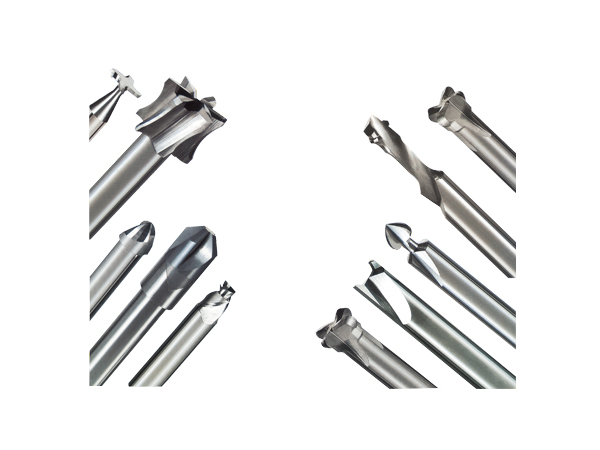Focus on tool design and R & D
Precision cutting tools from Germanymanufacturer
+86 133-9231-4699
Focus on tool design and R & D
+86 133-9231-4699

HSK knife handle
HSK tool system is a new type of high-speed short taper tool holder. Its interface adopts the method of simultaneous positioning of the taper surface and the end surface. The tool holder is hollow, the length of the cone is short, and the taper is 1/10, which is conducive to realization. Lightweight and high-speed tool change. As shown in Figure 1.2. Due to the hollow cone and end face positioning, the radial deformation difference between the spindle hole and the tool holder during high-speed machining is compensated, and the axial positioning error is completely eliminated, making high-speed and high-precision machining possible. This kind of tool holder is more and more popular in high-speed machining centers.
KM knife handle
The structure of the tool holder is similar to that of the HSK tool holder. It also adopts a hollow short cone structure with a taper of 1/10. It also uses the taper surface and the end surface to locate and clamp at the same time. As shown in Figure 1.3, the main difference is that the clamping mechanism used is different. The clamping structure of KM has applied for a US patent, which uses a larger clamping force and a higher rigidity of the system. However, because there are two symmetrical arc grooves on the tapered surface of the KM tool holder (applied during clamping), it is thin in comparison, some parts have poor strength, and it requires a very large clamping force. normal work. In addition, the patent protection of the KM tool holder structure limits the rapid promotion and application of the system.
NC5 Tool Holder
It also uses a hollow short taper structure with a taper of 1/10, and also uses the taper surface and the end surface to locate and clamp at the same time. Because the torque is transmitted by the keyway on the front cylinder of the NC5 tool holder, there is no keyway for torque transmission at the rear of the tool holder, so the axial dimension is shorter than that of the HSK tool holder.
The biggest difference between it and the previous two tool holders is that the tool holder does not adopt a thin-walled structure, and an intermediate taper sleeve is added to the taper surface of the tool holder. KM toolholders and HSK toolholders compensate for the manufacturing errors of the toolholder and spindle through the deformation of the thin wall, ensuring reliable contact between the tapered surface and the end surface at the same time, while the NC5 toolholder achieves this goal through the axial movement of the intermediate taper sleeve. The axial movement power of the intermediate cone sleeve comes from the disc spring on the end face of the tool handle. Due to the strong error compensation capability of the intermediate taper sleeve, the NC5 tool holder has slightly lower requirements on the manufacturing accuracy of the spindle and the tool holder itself. In addition, the NC5 tool holder has only one screw hole for installing the pull stud. The hole wall is thicker and the strength is high. The pressure-increasing clamping mechanism can be used to meet the requirements of heavy cutting. The main disadvantage of this kind of tool holder is that a contact surface is added between the tool holder and the spindle taper hole, and the positioning accuracy and rigidity of the tool holder are reduced.
CAPTO handle
It is a CAPTO tool holder produced by Sandvik. The structure of this kind of tool holder is not a cone shape, but a triangular pyramid. Its edge is arc-shaped, the taper is 1/20, and the hollow short cone structure adopts the taper surface and the end surface to contact and locate at the same time. The triangular cone structure can realize torque transmission without sliding in both directions, no transmission key is needed, and the dynamic balance problem caused by the transmission key and keyway is eliminated. The surface of the triangular cone is large, so that the surface pressure of the tool holder is low, it is not easy to be deformed, and the wear is small, so the accuracy is maintained. However, the processing of the triangular taper hole is difficult, the processing cost is high, it is not compatible with the existing tool holder, and the fit will be self-locking.

Mobile QR code

Official account

Applet



